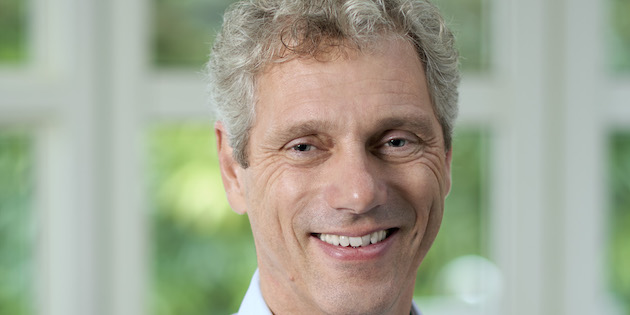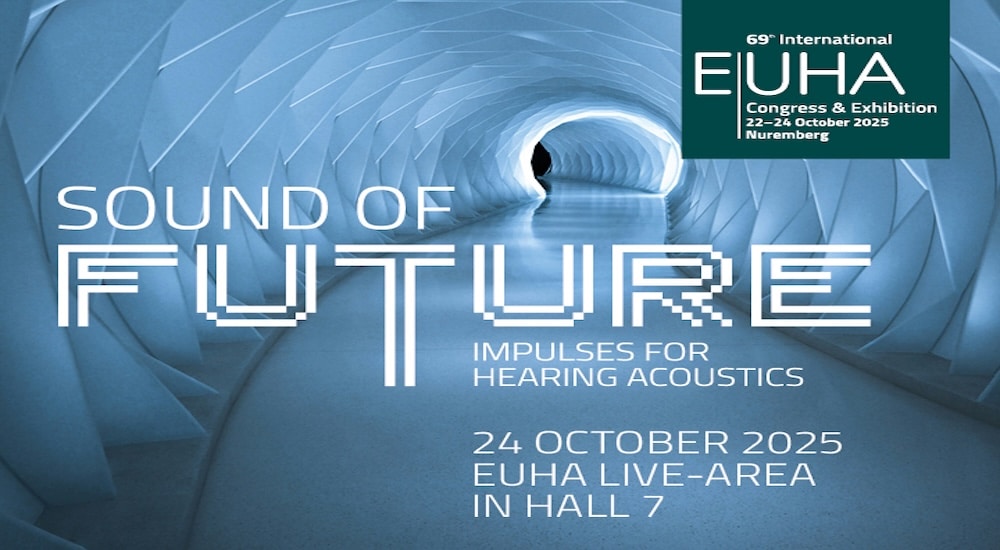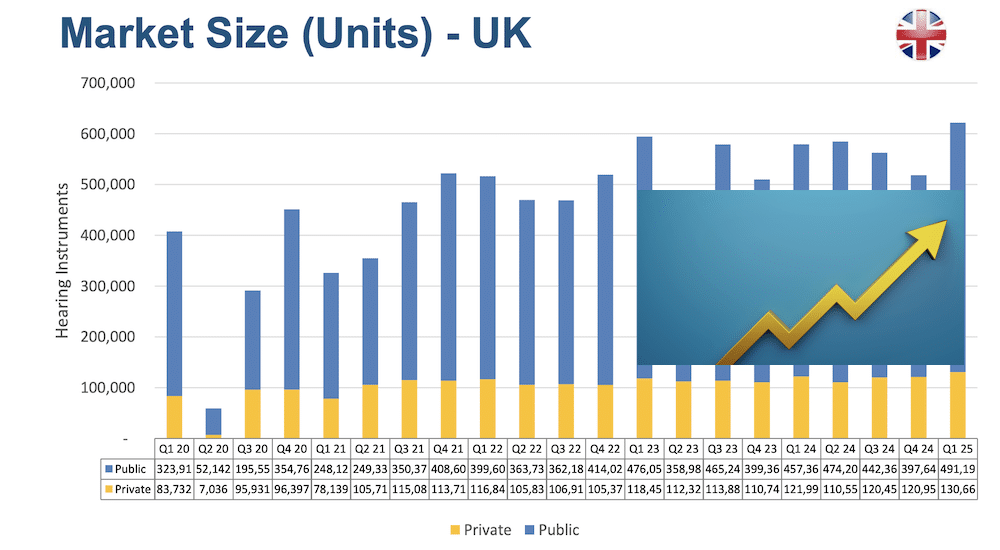WORLD WITHOUT STIGMA - Addressing the long-held stigmas associated with hearing instruments
stigma
The British Irish Hearing Instrument Manufacturers Association (BIHIMA) interviewed one of its members, Maarten Barmentlo, Chief Marketing Officer at WS Audiology, on how the company’s Signia brand is tackling the issue of stigma in our industry.

BIHIMA: How much is stigma still an issue in the hearing loss industry and why does it exist?
Maarten Barmentlo (M. B.) : I think stigma is definitely still an issue – for health-care professionals and for consumers. It is the persistent notion that hearing aids are associated with being old. The focus on not showing ageing has not decreased; it is only getting stronger. You have some brands, like Dove, who show real people, attempting to work on this stigma of having to be perfect and looking forever young, but this is rare. However, all is not lost as I do think that there are tremendous advancements in tech that are allowing us to start addressing the stigma issues.
BIHIMA: What are the barriers that need to be overcome?
M.B.: When we did consumer research on the barriers that exist for people entering the hearing aid market, we identified that awareness, affordability, and access were key. In the domain of awareness, stigma still remains important. The challenge with stigma is that people don’t want to admit to it. But we need to recognise that it is the association of hearing aids with getting old that puts people off wearing them.
Stigma and ageing
BIHIMA: How have you addressed this association with ageing?
B.M.: All hearing instruments have shapes that are determined by the battery, they look like a droplet. Everybody in the industry uses the same batteries for their instruments, it defines the shape of a hearing aid and this shape is associated with the stigma.
Across the industry we can see that the size of a hearing instrument has been addressed, and colour options are now much wider. But shape is where we saw opportunity for change with our Signia brand. We really listened to con-sumers and uncovered that if we had an elongated design, it wouldn’t be associated with hearing aids of the past.
Firstly, we matched colours to the accessories people now buy, like white and rose gold, not the hair and skin tones historically associated with hearing aids. In the second stage we leveraged the growing acceptance of wearing earbuds, developing a hearing instrument that reflects the shape of an earbud. So far, the reactions have been overwhelmingly positive.
The earbud form factor
BIHIMA: Does an earbud shape affect wearability, by not matching the structure of the ear?
M.B.: The key is that the Signia Active Pro ear buds are amaz-ingly light and small. If you compare them with earbuds that people wear to listen to music, they are much more powerful, more comfortable and lighter.A lot of consumers at the beginning of their hearing aid journey don’t believe they need to wear them all day. We know that all day wear is advised to get the maximum benefit. But we found consumers tended to disagree and expressed their intent to only wear them occasionally. This new form facilitates this occasional use as they are easier to put in and take out than other hearing aids.
Future hearing aids
BIHIMA: Will hearables and hearing aids become one product in the future?
B.M.: There is still a difference in the experience our industry brings to the table with audiology know how, miniaturi-sation and power.Let’s also remember that addressing hearing loss continues to be a service-led provision with the professional-client relationship being at the heart of a successful outcome in the majority of situations.
Client needs also vary, some require a more involved level of support from professionals whereas others seek out a more frictionless experience with limited contact. It’s our responsibility to address needs of all types of consumers and develop solutions accordingly.We are in the business of bringing wonderful sound to all. But we’re not an Apple or a Samsung, we are not trying to compete for the best headsets out there. We do however want to respond to consumer demands, like streaming music, so this is made available in a hearing instrument.
Industry parallels: the optical industry
BIHIMA: Can we take any learnings from the optical industry on the issue of stigma?
M.B.: We look at a number of parallel industries in which stigma is an issue to understand how to address it, and optics is a good one. For a long time, the solution was to hide failing eyesight with contact lenses. For hearing aids we did the same, hiding them away. It is only recently that we have made a leap and done the opposite.
As with glasses we are making the hearing aid a fashion accessory that people are proud to wear.There is this idea of ‘coming out’ in the industry – acknowledging that you have a hearing loss or optical loss. When this happens, we want to encourage people to choose a fashionable solution. This change happened earlier in the optical industry as they had influencers who chose extravagant designs and made glasses into a fashion statement. For our industry we need to find those fashion influencers who can show they are proud to wear their hearing aids.
A way forward
BIHIMA: How do we change the conversation?
M.B.: We need to reinforce the message that not looking after your hearing loss is what is making you look old. Comments like ‘what are you saying?’, ‘can you repeat that?’, are the true signs of ageing, not the hearing aids you wear.
BIHIMA: Has the major rise in consumer hearing tech had a positive impact on the hearing aid industry?
M.B.: Leaps are usually made in the technical interface of a thing, so yes consumer adoption of new technology is a major leap. Adoption of hearables is increasing, and ear buds are becoming the norm. It is up to our industry to rise to the challenge and adapt our savvy instruments to this fashion trend.
BIHIMA: How does our industry need to adjust?
M.B.: The most important thing for our industry is to adopt human-centred design as a concept. This is not a new idea, but for our industry it is. We have to really listen to what consumers tell us: listen with the intent to be surprised! As an industry we are very focussed on singling out the clinical issue and finding the solution. But if we look at our engagement with the consumer, we see the optical industry is miles ahead.
When you buy glasses, you look at what type you want and how it fits into your life and personal style, then you move on to the clinical part. We do it the other way round. It is this notion of being consumer centric that will create the shift. I think it is happening and we are seeing advances. The product is one example of this, but also the shopping experience is changing, people are starting to experiment.
BIHIMA: Finally, paint us a picture of a world without hearing aid stigma; what would it look like?
M.B.: You would see a lot less people fading away from the conversation into isolation. There would be increased engagement from people, particularly those in later life.
At social occasions the older members will be more involved.We know that people focus on their looks, on their style, it is an expression of themselves. In a world where hearing instruments are no longer stigmatised, they would be a key part of how people express themselves. The brands of hearing aids would be important. In the glasses industry it has become the frames that reflect branding, and brand licensing is a big thing. So perhaps that will be the path for hearing instruments? Or perhaps in hearing, where our brands are already established, they will become much more important on a consumer level as a way to express who you are.
The hearing instrument is also a future gateway to the world of the consumer. The ear is an ideal place to meas-ure a lot of vital signs. This is a domain that will evolve. You wear hearing instruments for 18 hours a day, so it is a great place to monitor your health. The instrument is connected to your mobile phone and the internet, so this is another important part of engagement. The hearing instrument will definitely be the gateway to the modern world.
The way people shop for their hearing devices will also be much more consumer centric. It will be a pleasant, engaging experience.
I’m convinced there are tipping points when it comes to innovation and we are on the cusp with hearing instru-ments. We already see success in our Signia Styletto range, and we see the willingness to become more consumer oriented from hearing care professionals. The technology is here, and hearing care professionals are embracing it. It will happen. Soon. And it will be brilliant!.
Source: Audio Infos UK issue 142 May-June 2021



